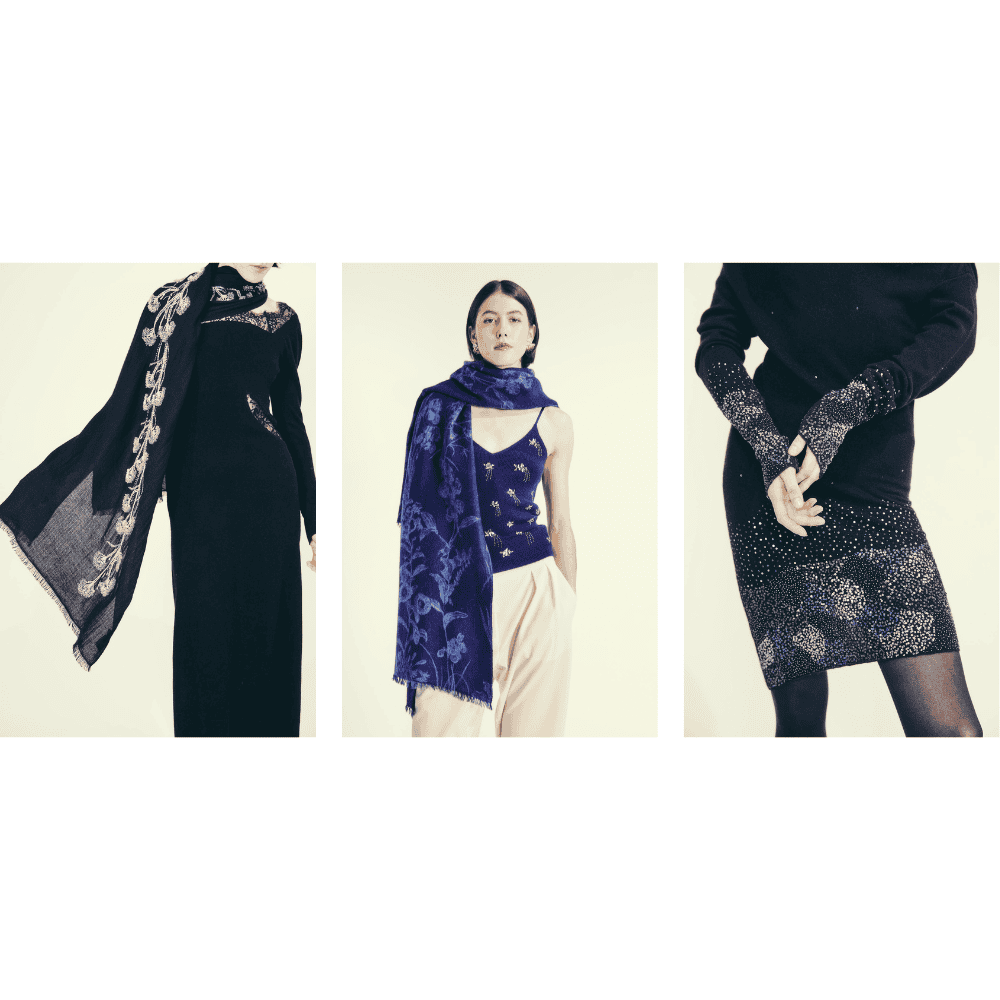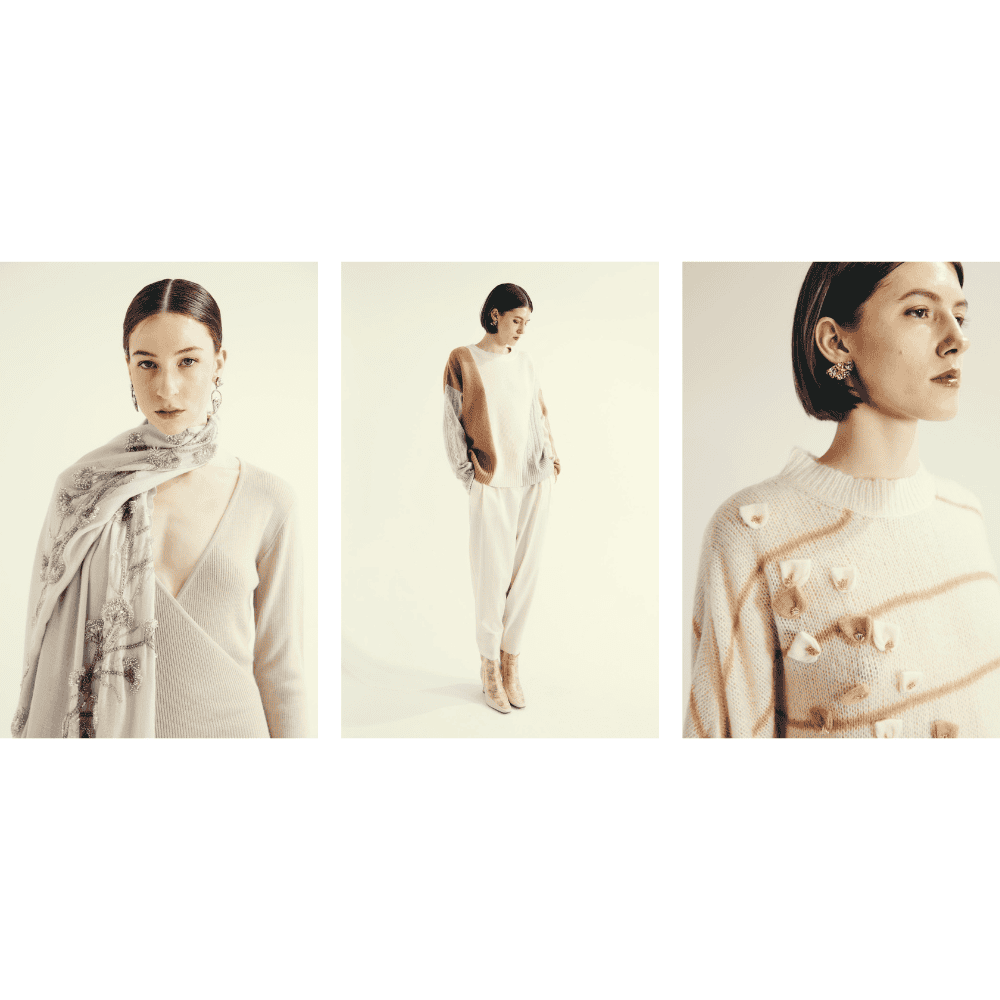Fashion is more than fabric and thread—it’s an extension of identity, a tool for empowerment, and a medium for storytelling. For Anushka Rajbhandari, the founder of OO-TO, a luxury brand redefining cashmere with a contemporary twist, fashion is also deeply personal. Rooted in Nepalese heritage and shaped by global influences, OO-TO is a brand that fuses timeless craftsmanship with modern innovation, offering versatile wardrobe staples that transcend seasons.
Growing up in Kathmandu, Nepal, Rajbhandari often found herself frustrated by the rigid expectations surrounding women’s fashion. Clothing options were limited, and societal norms dictated how women should dress. As someone who didn’t fit the conventional beauty ideals of her culture, she struggled to find garments that reflected her true self.
Turning to menswear for comfort and confidence, she realized early on that fashion had the power to transform and liberate. “These early experiences with clothing shaped how I viewed fashion—not just as a way to dress but as a tool for self-expression and empowerment,” says Rajbhandari.
“Finding my identity through clothing became a central part of my girlhood and womanhood.”
By the age of 11, she had already set her sights on becoming a designer, dreaming of a future where she could create clothing that celebrated individuality.

Photography by Van Strahl, Creative direction by Clay Delay
Her journey took a pivotal turn when she moved to the U.S. for her undergraduate studies. Though she majored in business, her passion for design never waned. Interning at renowned fashion houses, including Prabal Gurung and Ryan Roche, she immersed herself in the worlds of production, sales, and public relations. Simultaneously, she honed her technical skills through design courses, shaping a well-rounded perspective that would eventually lead to the launch of her own brand.
Inspired by the intersection of heritage, craftsmanship, and contemporary design, OO-TO was born. The name itself signifies simplicity and authenticity, embodying the brand’s mission to create elevated basics that blend seamlessly into modern wardrobes. A strong focus on quality and storytelling sets OO-TO apart, with each piece serving as an extension of the founder’s journey and cultural influences.
“Sustainability is at the heart of OO-TO,” Rajbhandari explains. “I grew up in a family business that valued quality over quantity, and that ethos has shaped my approach. From responsibly sourced cashmere to innovative knitting techniques that minimize waste, every decision reflects a commitment to sustainability.”
This fusion of traditional craftsmanship with modern technology results in timeless designs that respect both heritage and the environment.
Rajbhandari’s inspirations span across disciplines, from the precision of architecture to the emotion of music and art. Nepal’s Newari architecture, known for its intricate woodwork and geometric patterns, deeply influenced her appreciation for design that tells a story.
“In fashion, I’ve always wanted to create designs that feel personal yet universally resonant,” says Rajbhandari.

Photography by Van Strahl, Creative direction by Clay Delay
Her time working with Prabal Gurung, who shares her Nepalese roots, reinforced the importance of cultural storytelling in fashion, while Ryan Roche’s dedication to sustainability instilled a sense of mindfulness in craftsmanship.
For OO-TO, the creative and commercial aspects of fashion are not opposing forces—they coexist. Each collection begins with an idea or narrative that reflects a moment in time, expressed through carefully selected fabrics, colors, and silhouettes. But wearability remains a priority.
“For me, creativity and commercial viability go hand in hand,” Rajbhandari states. “I start by thinking about the needs and desires of the OO-TO customer—what makes them feel confident, and what fits seamlessly into their wardrobe. From there, I let the design process take its course, always keeping versatility and wearability in mind.”
Each OO-TO collection begins with experiences, poetry, music, or visual art. Mood boards shape the initial vision, guiding fabric selection and silhouette development.
Given the brand’s deep connection to cashmere, textile sourcing is a meticulous process, handled in collaboration with Nepalese artisans who specialize in the craft.
“Every collection begins with a story—a feeling or idea I want to bring to life,” Rajbhandari shares. “It could be inspired by my heritage, the phase of life I’m navigating, the music that moves me, poetry that resonates, or art that leaves a lasting impression.”
Given the brand’s deep connection to cashmere, textile sourcing is a meticulous process, handled in collaboration with Nepalese artisans who specialize in the craft. Once fabrics and initial sketches are finalized, the sample-making phase begins. This stage involves multiple rounds of refinement, ensuring that fit, feel, and function align seamlessly. Every design is crafted to be both personal and timeless, a reflection of the brand’s commitment to quality and authenticity.
As OO-TO continues to grow, the brand remains steadfast in its commitment to sustainability, craftsmanship, and individuality. Expanding its presence in the luxury market while staying true to its core values is the ultimate goal.
“If I weren’t a designer, I’d likely still be in a creative field, perhaps focusing on branding or visual storytelling,” Rajbhandari reflects. “I’ve always had a deep passion for building connections, whether through design, communication, or even data. The way data can shape and inform decision-making is something I find fascinating.”
For Rajbhandari, fashion has always been about more than just clothing—it’s about identity, culture, and confidence. With OO-TO, she is building a brand that not only elevates everyday essentials but also empowers individuals to express their authentic selves. In an industry that often prioritizes trends over meaning, OO-TO stands as a testament to the power of purposeful design.
Presented by: APG.

